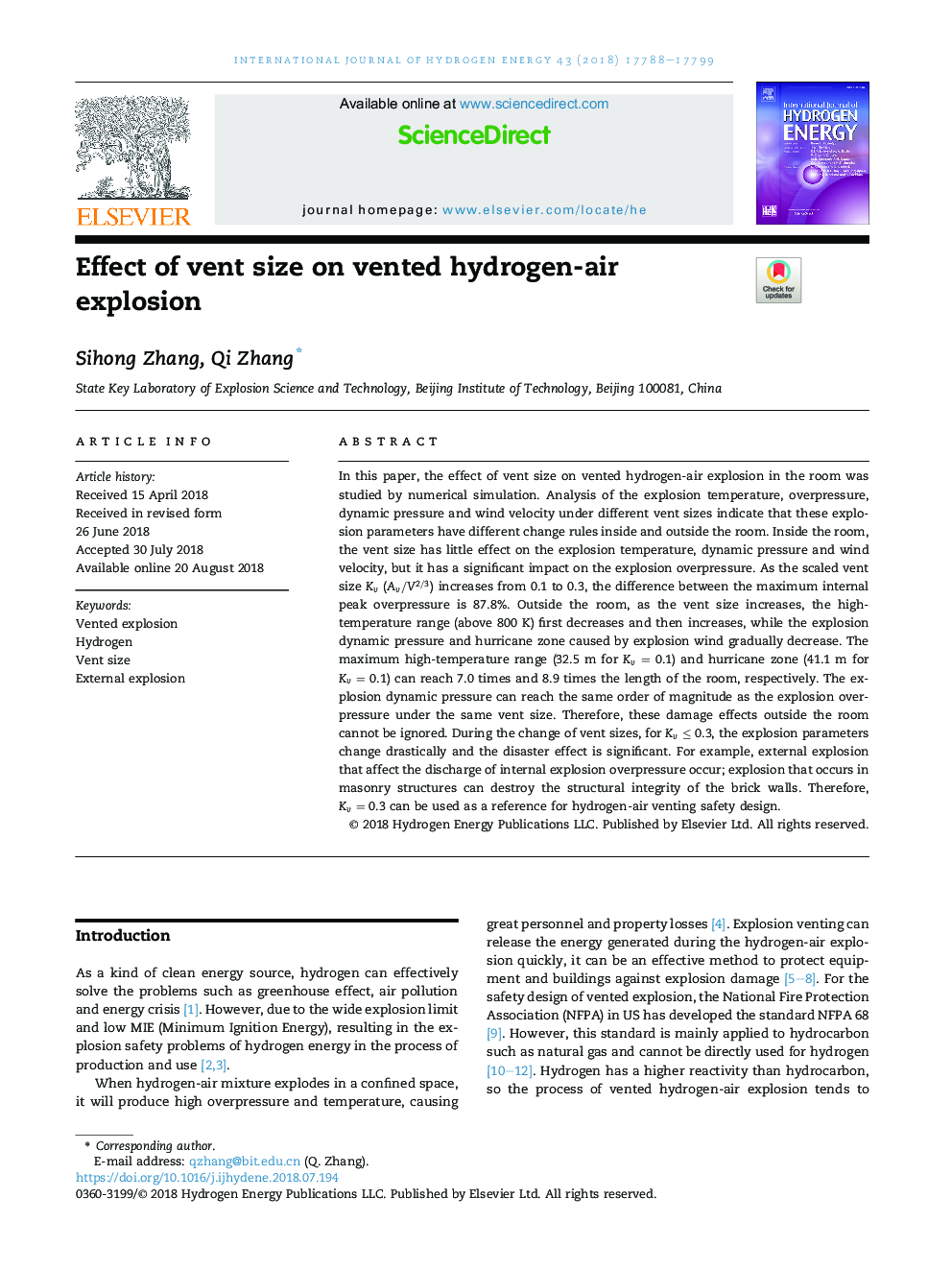| Article ID | Journal | Published Year | Pages | File Type |
|---|---|---|---|---|
| 8954946 | International Journal of Hydrogen Energy | 2018 | 12 Pages |
Abstract
In this paper, the effect of vent size on vented hydrogen-air explosion in the room was studied by numerical simulation. Analysis of the explosion temperature, overpressure, dynamic pressure and wind velocity under different vent sizes indicate that these explosion parameters have different change rules inside and outside the room. Inside the room, the vent size has little effect on the explosion temperature, dynamic pressure and wind velocity, but it has a significant impact on the explosion overpressure. As the scaled vent size Kv (Av/V2/3) increases from 0.1 to 0.3, the difference between the maximum internal peak overpressure is 87.8%. Outside the room, as the vent size increases, the high-temperature range (above 800 K) first decreases and then increases, while the explosion dynamic pressure and hurricane zone caused by explosion wind gradually decrease. The maximum high-temperature range (32.5 m for Kv = 0.1) and hurricane zone (41.1 m for Kv = 0.1) can reach 7.0 times and 8.9 times the length of the room, respectively. The explosion dynamic pressure can reach the same order of magnitude as the explosion overpressure under the same vent size. Therefore, these damage effects outside the room cannot be ignored. During the change of vent sizes, for Kv â¤Â 0.3, the explosion parameters change drastically and the disaster effect is significant. For example, external explosion that affect the discharge of internal explosion overpressure occur; explosion that occurs in masonry structures can destroy the structural integrity of the brick walls. Therefore, Kv = 0.3 can be used as a reference for hydrogen-air venting safety design.
Related Topics
Physical Sciences and Engineering
Chemistry
Electrochemistry
Authors
Sihong Zhang, Qi Zhang,
